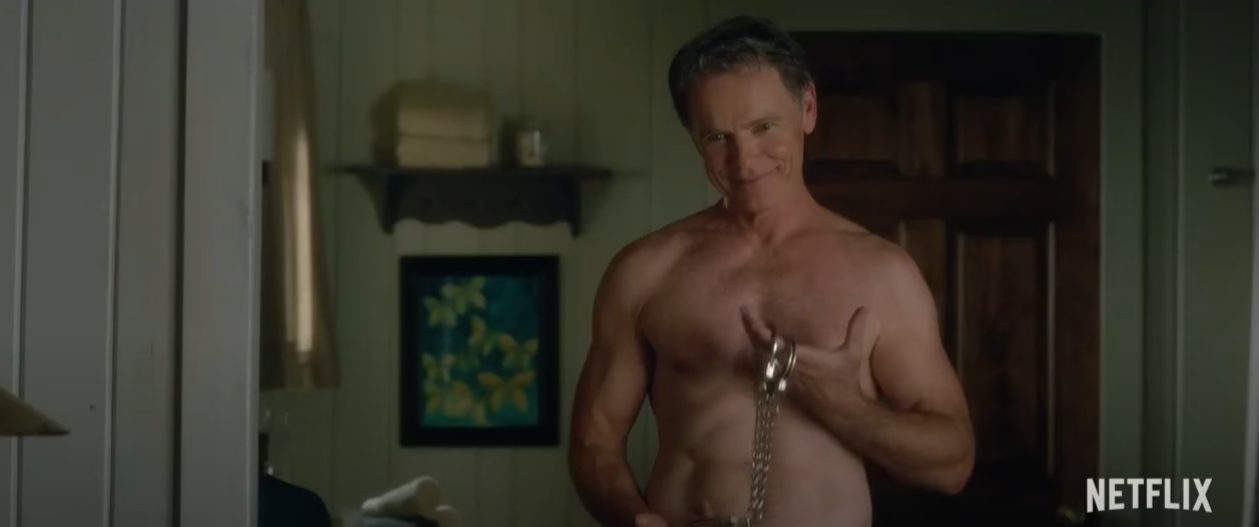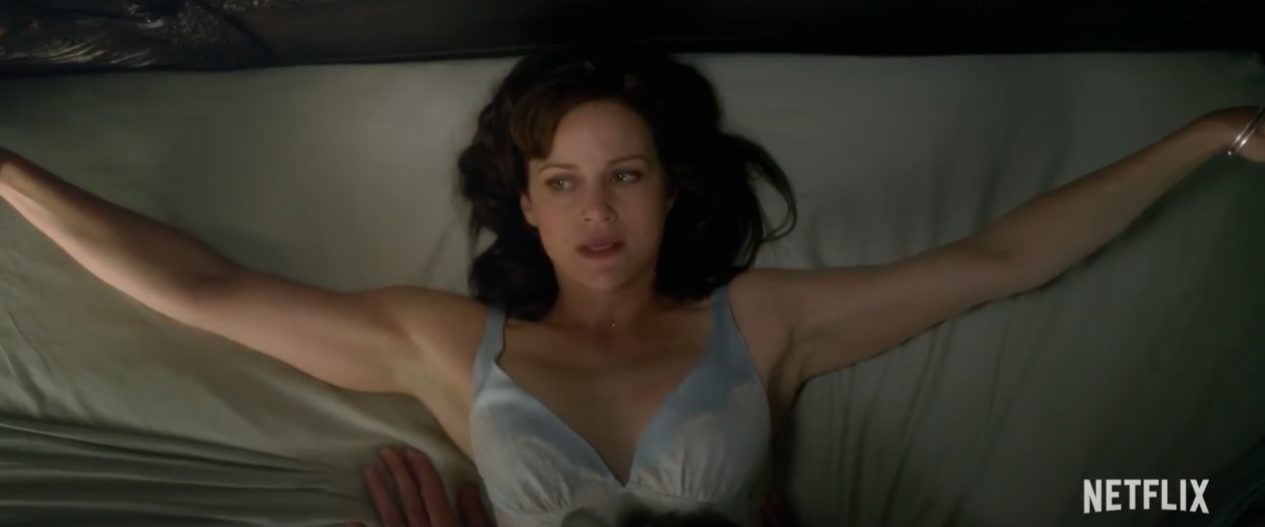“Gerald’s Game” is a 2017 psychological horror-thriller film directed by Mike Flanagan, based on Stephen King’s 1992 novel of the same name. The movie delves into themes of trauma, survival, and psychological resilience, blending psychological horror with intense drama.

Plot Overview
Jessie and Gerald Burlingame, a married couple, retreat to an isolated lake house to rekindle their marriage. Gerald introduces a sexual game, handcuffing Jessie to the bedposts. However, things quickly spiral out of control when Gerald suddenly dies of a heart attack, leaving Jessie alone and shackled to the bed.

With no neighbors nearby and no way to escape, Jessie faces a terrifying battle for survival. As dehydration, fatigue, and fear set in, Jessie begins hallucinating, seeing visions of her deceased husband and a more empowered version of herself. These hallucinations both torment and guide her as she confronts not only her immediate physical danger but also repressed traumatic memories.

Characters
Carla Gugino as Jessie Burlingame
Bruce Greenwood as Gerald Burlingame
Henry Thomas and Chiara Aurelia as young Jessie’s father and younger self
Main Events in The Movie
Jessie’s Psychological Struggle:
Jessie’s mind fractures under the stress, and she converses with manifestations of Gerald and herself. Gerald’s vision taunts her about her past traumas and her hopeless situation, while her stronger self encourages her to fight for survival.
The Eclipse and Childhood Trauma:
Jessie recalls a traumatic memory from her childhood involving her father during a solar eclipse. Her father had manipulated and molested her, leading her to bury the trauma deep within. This suppressed pain resurfaces, symbolizing how Jessie has been metaphorically “chained” her whole life, much like the literal handcuffs she’s now trapped in.
The “Moonlight Man”:
Jessie begins seeing a tall, disfigured figure lurking in the shadows, whom she calls the “Moonlight Man”. Initially, he appears to be a hallucination, representing death waiting for her. However, the figure is later revealed to be a real person—Raymond Andrew Joubert, a grave robber and serial killer who collects bones and jewelry from his victims.
The Escape:
In a gruesome and intense scene, Jessie realizes the only way to escape is to deglove her hand. She smashes a glass of water and slices open her wrist, peeling back the skin to slide her hand out of the cuff. Severely injured, she navigates through the house, fights off Joubert (who doesn’t harm her but watches), and drives herself to safety.
Confrontation with the Moonlight Man:
Months later, Jessie learns that the “Moonlight Man” was real. Raymond Joubert was arrested for multiple murders and grave robberies. Jessie confronts him in court, recognizing that he was a passive figure in her ordeal. By facing him, Jessie symbolically overcomes her fear and past trauma, realizing he holds no power over her.
Review and Key Elements
Survival and Empowerment:
Jessie’s physical entrapment mirrors her lifelong emotional bondage. Her escape is both literal and symbolic, representing her reclaiming control over her life.
Trauma and Repression:
The film explores how unprocessed trauma, especially childhood abuse, can shape a person’s psyche. Jessie’s past, buried for years, surfaces when she’s most vulnerable, forcing her to confront it.
Death and Fear:
The “Moonlight Man” serves as a metaphor for death. His looming, silent presence reflects Jessie’s fear of dying alone and forgotten.
Duality of Self:
Jessie’s hallucinations of herself represent the split between her weak, fearful side and her strong, survival-driven self. The dialogue between these selves propels her journey toward empowerment.
Rotten Tomatoes: The film holds a 91% approval rating based on 79 reviews, with an average rating of 7.60/10. The consensus states, “Carla Gugino carries Gerald’s Game‘s small-scale suspense with a career-defining performance.”
Metacritic: It has a score of 77 out of 100, indicating “generally favorable reviews.”
Roger Ebert: Brian Tallerico praised the film, noting that director Mike Flanagan “has made just about the best version of ‘Gerald’s Game’ that could result from not majorly overhauling the book.”
IMDb: Users rate the film at 6.5/10 based on approximately 134,000 ratings, reflecting generally favorable audience feedback.
The Ending Explained
Jessie survives and starts a new life dedicated to healing. She uses her late mother’s inheritance to support survivors of abuse, highlighting her transformation from victim to advocate.
Her final confrontation with Raymond Joubert in court is significant. She mocks him, saying, “You’re so much smaller than I remember,” symbolizing how fear magnifies threats. Joubert, once a terrifying figure, is now powerless in her eyes.
Jessie’s escape is not just from the physical handcuffs but also from the emotional and psychological chains of her past. The film ends on a hopeful note, showing Jessie walking confidently into the light, free at last.
Final Thoughts
“Gerald’s Game” is a harrowing exploration of survival, trauma, and empowerment. The film masterfully intertwines physical horror with psychological depth, delivering a story that’s as emotionally impactful as it is terrifying. It challenges viewers to consider how our past shapes us and how true freedom comes from confronting inner demons.




